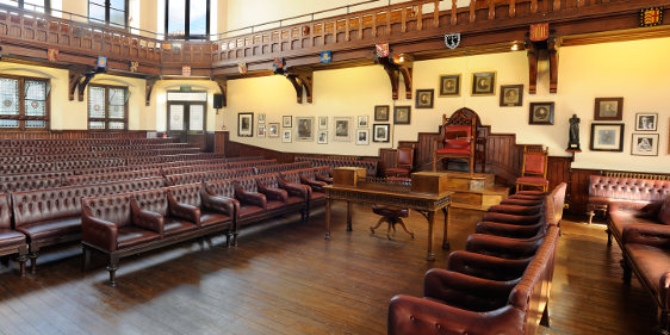The Long Gilded Age considers the interlocking roles of politics, labour, and internationalism in the ideologies and institutions that emerged at the turn of the twentieth century. Presenting a new twist on central themes of American labor and working-class history, Leon Fink examines how the American conceptualization of free labor played out in iconic industrial strikes, and how “freedom” in the workplace became overwhelmingly tilted toward individual property rights at the expense of larger community standards. Michail Zontos finds the book to be a very interesting collection of essays that stresses the transnationalism of the period.
 The Long Gilded Age: American Capitalism and the Lessons of a New World Order. By Leon Fink. University of Pennsylvania Press. 2014.
The Long Gilded Age: American Capitalism and the Lessons of a New World Order. By Leon Fink. University of Pennsylvania Press. 2014.
In The Long Gilded Age, Leon Fink, one of America’s foremost experts in American labor and immigration history, explores the era that saw the industrialization of the United States, the rise of labor and unchecked capitalism and the almost inevitable social conflict that shook the country during the late nineteenth and early twentieth centuries. By denying the conventional dichotomization of the period, he unifies the Gilded Era and the Progressive Era under the label Long Gilded Age (1880-1920) something that allows him to discuss a colourful variety of topics from the establishment of the free labour as the quintessential American ideology to the role of universities as centers of social reform.
What makes this highly readable collection of thought-provoking essays even more interesting is Fink’s declared purpose to read the labor history of the era through a transnational lens. By accepting as a theoretical framework the 2000 La Pietra Report of the Organization of American Historians Project, which officially initiated the transnational turn in American historiography, Fink offers a fresh reading of a period which was shaped by capitalists, socialists, middle class reformers and intellectuals who lived vibrant transnational lives.
In the first chapter, Fink presents a fresh account of the contradictions inherent in what he considers the dominant American ideology: the idea of free labor. An initially progressive idea that became the rallying cry of the North during the American Civil War, the notion came under fire by progressives and socialists during the end of the nineteenth century as a facade that obscured exploitation and inequality during the industrializing period of the country. “Initially associated with positive images of opportunity, progress, and liberation,” Fink writes, “the concept had since become identified with arbitrary dismissals, anti-strike injunctions, and a general loss of control at work that for many workers amounted to what they called ‘wage slavery’” (p.14).
Many key figures of the labor movement during that time criticized the capitalistic transformation of the country in ways that evoked the slave-supporting South’s critique of the North during the Civil War. Many (but not all) American workers considered that capitalism was virtually wage slavery as they felt powerless as American law came to “buttress one aspect of free labor doctrine – the employer’s ‘freedom of contract’ – while simultaneously threatening organized worker’s collective field of action” (p.14). In this respect, Fink provocatively argues that the fundamental element that Alexis de Tocqueville pointed out as a central characteristic of a democratic system (during his visit to Jacksonian America) – the associations or self-constituted civic organizations – was only evident in business consolidation at the end of the nineteenth century America.

If worker associations and unions encountered immense difficulties in the United States, in Tocqueville’s more authoritarian home country, France, they had been accepted, even by conservatives who saw in them “a possible brace against socialist statism” (p.13) Yet, the notion of free labor was too powerful to be ignored. Freedom is an abstract concept, Fink stresses, and in the long struggle between capital and labor in the United States both sides declared that they fought for American freedom – by which they meant different things.
In another chapter, Fink explores the contribution of middle class intellectuals in moving the United States into a more egalitarian direction. The author considers the rise of the research university in the United States as one of the most positive and unique aspects of American development and focuses on the role of the University of Wisconsin.
In this Midwestern institution, a group of progressive scholars, gathered around economist Richard T. Ely, combined their expertise with social policy advocacy and, with support from local reformer politicians such as governor Robert La Follette, committed themselves to what became known as the ‘Wisconsin Idea’: a marriage of the public university research with state activism in order to promote welfare for the greater number of citizens. Fink places the experiment of Wisconsin in its international context by comparing it to the German Verein für Socialpolitik and the British Fabian Society. Both institutions promoted new currents in economic thought and shared an antipathy towards laissez-faire and neoclassical economics.
Many of the scholars who made the University of Wisconsin a center of social reform, Ely among them, had studied in Germany under prominent members of the Verein für Socialpolitik, such as Gustav von Schmoller. They also had frequent contact with the Fabians, such as the directors of the society Sidney and Beatrice Potter-Webb. The foundation of the London School of Economics in 1895, a Fabian project, as an academic institution with social oriented goals was but one of the elements that hinted to the strong collaboration of middle class scholars with the labor movement in both sides of the Atlantic. Although differences between the American and the European experiments existed, Fink implies that this collaboration, when it occurred, contributed fundamentally to democracy.
Overall, The Long Gilded Age, is a very interesting collection of essays that stresses the transnationalism of the period that Leon Fink discusses. The transnational perspective of the book shows how complex the life of many of the important players of the period was: the young American socialists who looked towards Europe for answers were not that different from figures such as Andrew Carnegie, the steel magnate who could allow the Homestead Strike to be crushed in the United States and, at the same time, contribute £100 to the campaign of Scottish socialist politician Keir Hardie (p.40).
Fink’s approach shows that, despite differences between the European and the American experience, the American case was by no means exceptional. At the same time, the Long Gilded Age was not a distinct period in American development. Although we tend to think of the United States as a country dominated by individualism and business dominance, the social tendencies discussed in the book have also been permanent in US history. Not only during the New Deal period, but also nowadays as healthcare reform efforts and the movement against inequality suggest. Fink’s work is an important and timely contribution in our transnational understanding of the United States. It requires some previous knowledge on the history of the period that it explores and on the approach it adopts, but for those who are even moderately acquainted with what Fink defines as the Long Gilded Age and with transnational American studies, this will be a fascinating read.
This review originally appeared at the LSE Review of Books.
Please read our comments policy before commenting.
Note: This article gives the views of the authors, and not the position of USApp– American Politics and Policy, nor of the London School of Economics.
Shortened URL for this post: http://bit.ly/1CkZKwm
——————————————–
Michail Zontos – Utrecht University
Michail Zontos holds a BA in International and European Studies (University of Piraeus), an MA in International Relations and Strategic Studies (Panteion University) and an MA in American Studies (Utrecht University). He is currently a PhD candidate at Utrecht University. His dissertation focuses on perceptions of Europe in the work of American historians Frederick Jackson Turner and Charles Austin Beard. He studied in the Netherlands as a scholar of the State Scholarships Foundation of Greece. Read more reviews by Michail.






